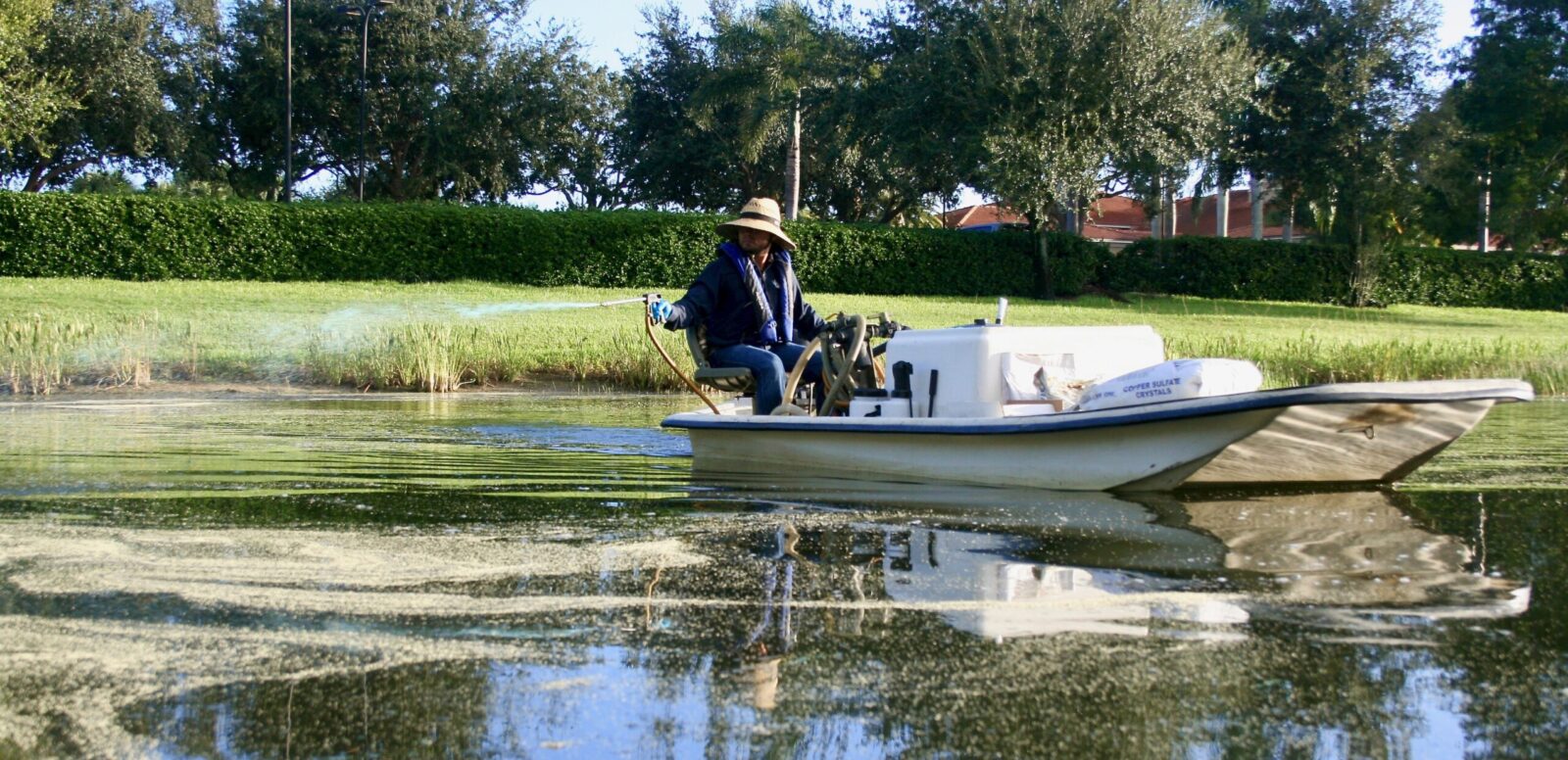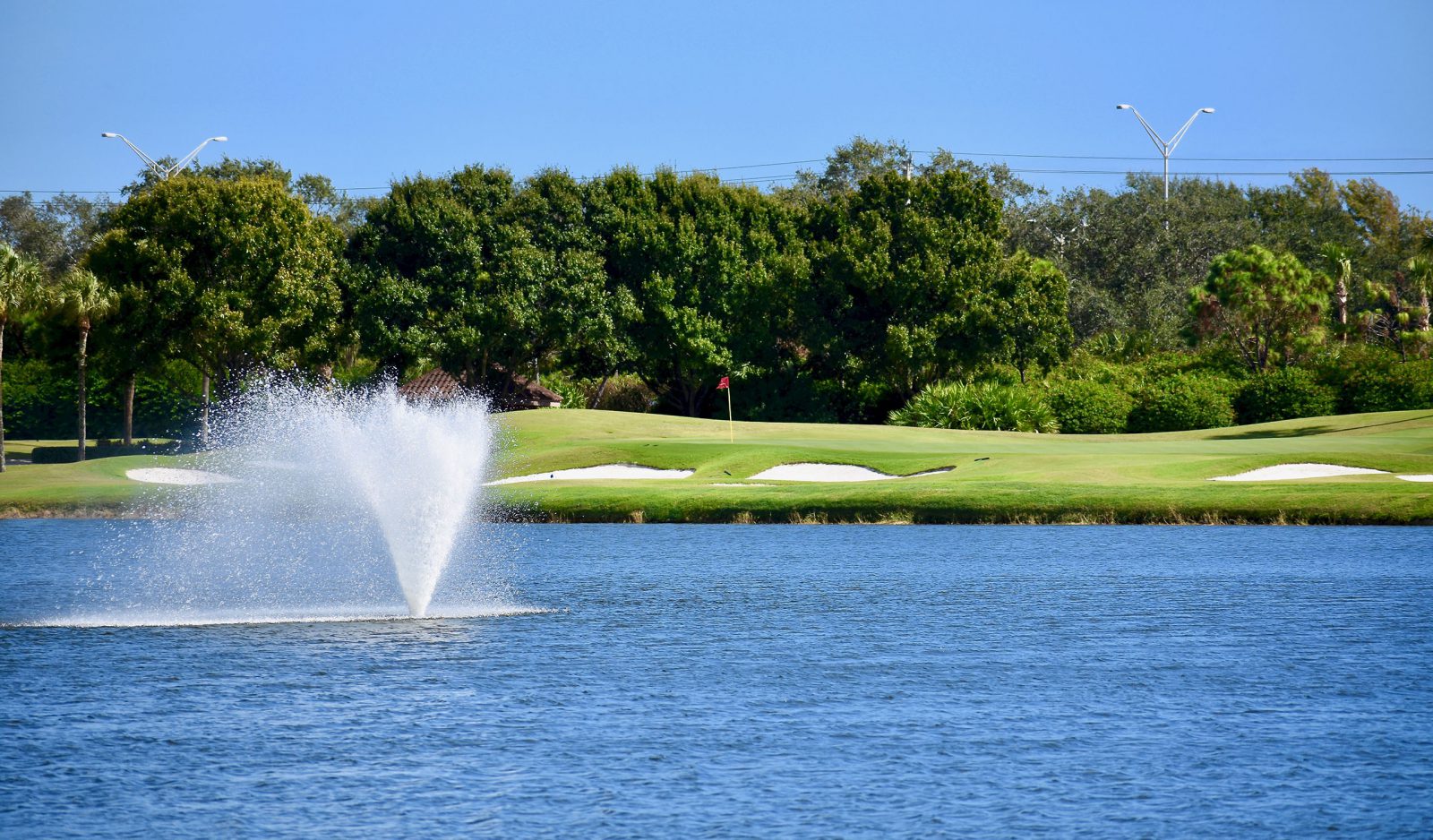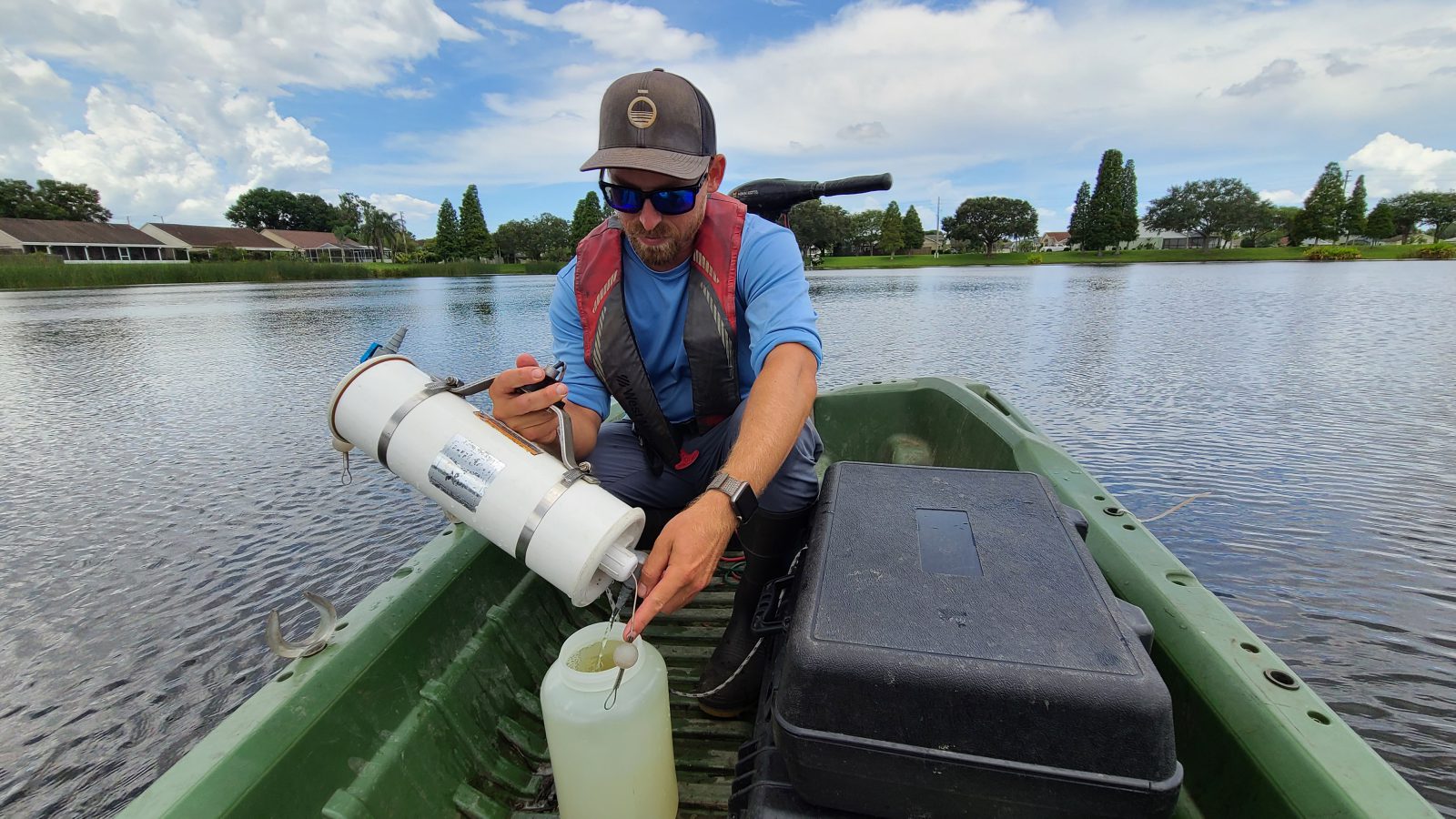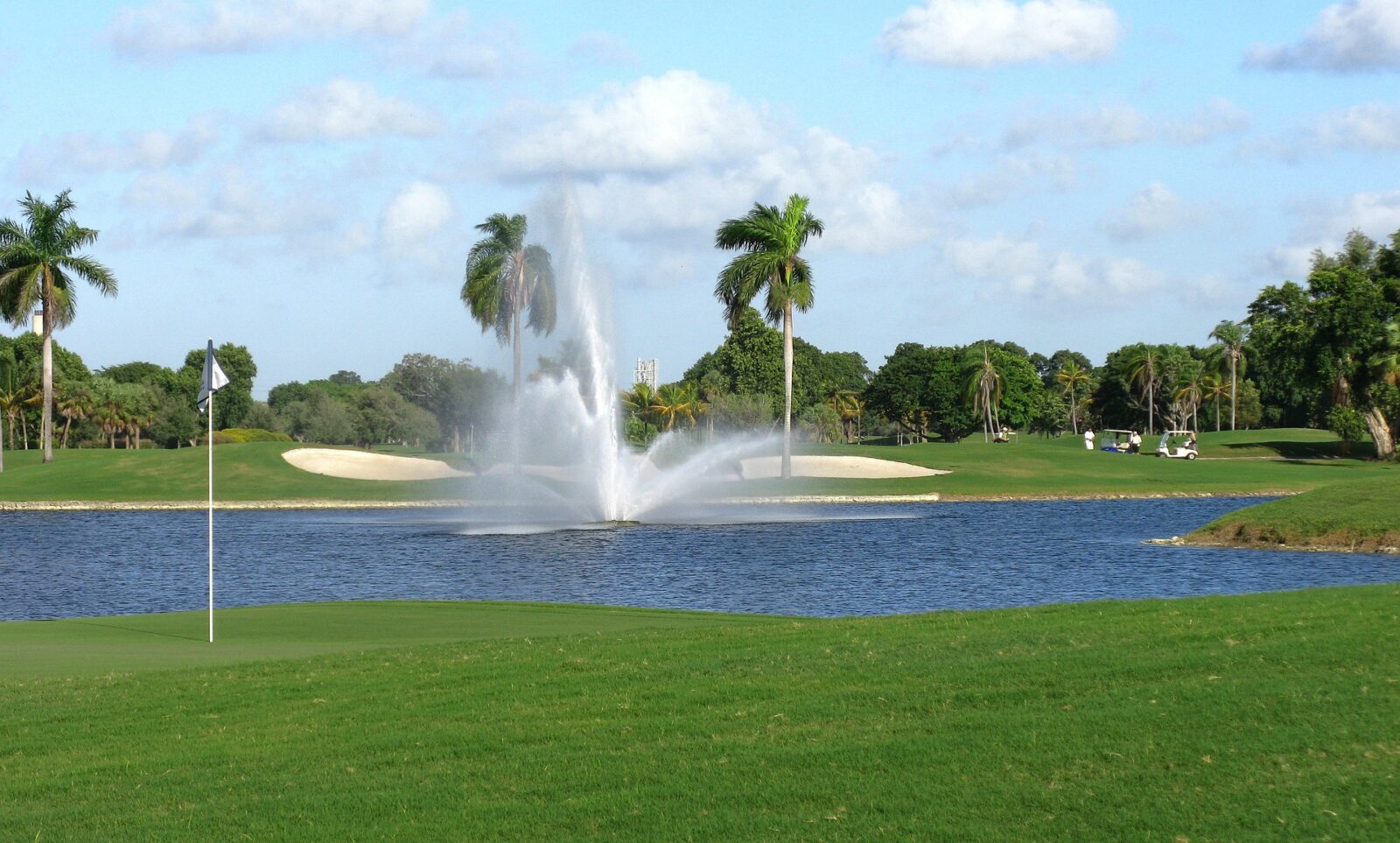
Debunking Myths: A Professional’s Take on Herbicides and Algaecides
It’s not uncommon for irrigation pond managers to invest thousands on irrigation pumps, water quality tests, beneficial submersed aeration systems, and floating fountains, but it’s rare to find a manager who establishes and uses a comprehensive lake management plan. Oftentimes, this apprehension is based on a misunderstanding of lake and pond management and how herbicides and algaecides could potentially have a negative impact on the waterbody from improper treatment.
We’re here to set the record straight, and let you know that with the proper choice of a product, application style and timing, algaecides and herbicides can greatly enhance the effectiveness of an irrigation pond management program while working in conjunction with proactive, sustainable solutions.
Do Aquatic Herbicides Damage Turf?
Many turf and golf managers fear that aquatic herbicide and algaecide treatments will damage their greens and the surrounding ornamentation, and put a hold on their irrigation water usage. These concerns are valid; shutting down an irrigation system for more than a day or two can be virtually impossible, especially during the growing season. But without proper herbicide and algaecide usage, an irrigation lake could experience more harm than good. If algae and aquatic weeds are allowed to grow and mature, this vegetation can enter irrigation intakes, clogging pipes and pumps and preventing irrigation systems from running properly. In the end, the headache of shutting down an irrigation system to fix a broken pipe or clearing nuisance vegetation from a drain will often outweigh the inconvenience of scheduled beneficial treatments.

How to Select the Correct Herbicide or Algaecide for Your Course's Lake
Product selection is critical when making the decision to treat any waterbody, especially if it is an irrigation source. There are two common types of herbicides: contact and systematic. Contact herbicides typically have short or even no irrigation restrictions as they can quickly control excessive vegetation being managed. While very effective when used properly, improper use can result in a sudden and dangerous depletion of dissolved oxygen in the waterbody. If left unmanaged, low oxygen levels can cause future vegetation problems and create a stressed environment for surrounding fish and wildlife.
Systemic herbicides, on the other hand, are translocated throughout the targeted plant or pond algae, controlling the target plant from the inside out. Systemic herbicides utilized in a prescription-based treatment plan developed by a lake management professional can result in targeted species control and have little to no impact on other plant life. While these products usually take longer to target vegetation and can sometimes require extended irrigation restrictions, they are typically the best choice for overrun waterbodies when paired with a proactive management plan that includes aeration, buffer management and nutrient remediation.

Are Herbicides and Algaecides Safe for Lakes?
When applied within label guidelines, these products have proven to be effective without altering water quality. That being said, no two waterbodies are the same. Water chemistries and application styles can vary greatly from pond to pond, and not knowing how to alter application rates accordingly can have adverse effects on the aquatic ecosystem. It’s worth consulting with a knowledgeable lake professional who is experienced in the process of algae and aquatic weed treatments.
Conduct Water Quality Tests Before Applying Herbicides or Algaecides
Before the application of EPA-regulated herbicides or algaecides, a professional will conduct water quality tests in order to fully understand the water chemistry, dissolved oxygen levels, pH, alkalinity and other important parameters. Water quality can be the deciding factor on what products are utilized, the rates at which they are used and specific application techniques. Water testing should also be an addition to your annual maintenance plan in order to compile critical baseline data. Over time, this data will provide a better understanding of potential nutrient shifts or increases in aquatic weed and algae growth.

Timing of Algaecide and Herbicide Applications
When using herbicides and algaecides, a lake management professional will also consider the timeframe in which they are applied. If left unmanaged for too long, weeds and algae that have reached a mature size or growth stage may require more staggered treatments, using more herbicides and algaecides and, ultimately, causing longer restricted water use periods. Much like pre-emergent weed treatments in a turf setting, successfully treating weeds is much easier before they begin to present an issue or when they are young and just beginning to actively grow.
Applications performed early in the growing season allow for limited impact to irrigation during a lower water use period, and can more effectively prevent clogged irrigation pumps throughout the rest of the season. Some systemic herbicides can be applied early enough in the growth stage that only low concentrations of herbicide are needed to effectively kill emerging plant tissue, and may even have no irrigation restrictions.

Prevent Algae and Weeds with Proactive Management
Being proactive—not reactive—in the industry will provide for better playing conditions and increased turf, lake and pond health. When your livelihood is on the line, why wait until an obstacle presents itself to address the source of the problem?
A proactive, long-term management plan provides solutions that can help reduce the ongoing reliance on pesticide treatments and enhance the beauty of the surrounding area. Such a plan will include alternative ways to combat nutrient runoff and nuisance aquatic vegetation growth. Beneficial buffers and the addition of native wetland plants along the shoreline can help stabilize and reduce erosion and filter available nutrients on which algae and nuisance weeds thrive. If water quality testing shows that nutrients are an issue, nutrient remediation can be achieved by the addition of flocculants such as Alum or a unique lanthanum-modified clay which permanently locks phosphorous, reducing available nutrients in the water column and sediment of your waterbody. Aerators and fountains combined with biological augmentation can also aid in nutrient remediation as well as muck reductions.
Enhance Your Course with Safe Lake Management Solutions
No matter your budget, location or intended waterbody use, it is possible to develop a safe and effective management plan for your lake or pond that includes the use of herbicides and algaecides. Professional lake management companies have the knowledge, tools and experience to ensure that appropriate rates, timing, application methods, and water chemistry are properly taken into account throughout the treatment of an irrigation lake. When working with a professional, irrigation lake managers should rest assured that herbicide and algaecide applications will enhance, not harm, their waterbody and surrounding ecosystem.
SOLitude Lake Management is committed to providing full service lake and pond management services that improve water quality, preserve natural resources, and reduce our environmental footprint. Our services include lake, pond, wetland and fisheries management programs, algae and aquatic weed control, mechanical harvesting, hydro-raking, installation and maintenance of fountains and aeration systems, water quality testing and restoration, bathymetry, lake vegetation studies, biological assessments, habitat assessments, invasive species management and nuisance wildlife management. Services, consulting and aquatic products are available to clients nationwide, including homeowners associations, multi-family and apartment communities, golf courses, commercial developments, ranches, private landowners, reservoirs, recreational and public lakes, municipalities, parks, and state and federal agencies. Learn more about SOLitude Lake Management and purchase products at www.solitudelakemanagement.com.









